“How much do you putting up on your triceps kickbacks these days?”
Asked nobody, ever.
What do they ask instead? You got it:
“How much do you bench?”
For whatever reason, the bench press gets an inordinate amount of attention among us weightlifters. Tumbleweeds blow through the gym on squat and deadlift days, but nobody skips chest days.
Well, while the bench press is a great exercise, it’s also one of the primary reasons so many lifters have shoulder problems.
Heavy benching with poor form is just a recipe for rotator cuff disaster, and heavy bench pressing with good form still places large amounts of stress on these small muscles.
In this article, we’re going to review what the rotator cuff is, why you need to protect it from injury, and which exercises are best for keeping it strong and healthy.
And then we’re going to get back to bench pressing. 🙂
Table of Contents
What is the Rotator Cuff?

The shoulder’s impressive range of motion is produced by two things: its structure and the rotator cuff muscles.
Structurally, it’s a “ball and socket” joint comprised of the top of the arm bone (ball) and the shoulder blade (socket).
Here’s how it looks:

As you can see on the left, the humeral head (top of the arm bone) and scapula (shoulder blade) form the core of the shoulder joint and are supported by the connection of the collarbone and acromion.
Now, on the right is the rotator cuff, which is a sleeve that enables the ball-shaped head of the arm bone to spin and roll while remaining in the socket of the shoulder blade.
This sleeve is comprised of four muscles and their tendons:
- Supraspinatus
- Infraspinatus
- Teres minor
- Subscapularis
Here’s a visual:
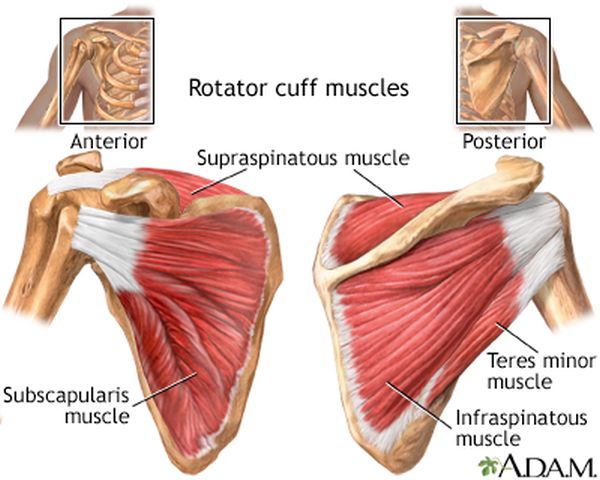
These muscles and tendons are quite strong but, when they become damaged, it can be extremely painful and debilitating. Nothing can put you on your ass faster than joint injuries.
And that’s why I’m glad you’re here. I want to help you “bulletproof” your shoulders.
Before we get into how, though, let’s take a closer look at the nature of rotator cuff injuries.


What Is a Rotator Cuff Injury?
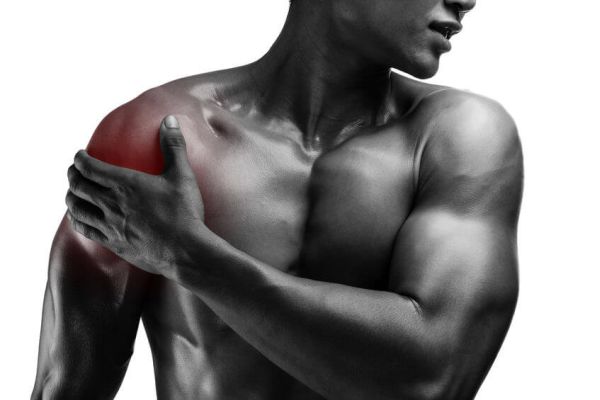
The two most common types of rotator cuff injuries are impingements and tears.
A shoulder impingement occurs when the soft tissues of the rotator cuff become swollen and inflamed.
This expansion in size leaves too little room for movement, which causes pinching between the arm bone and shoulder blade.
Here’s a simple diagram of how this looks:
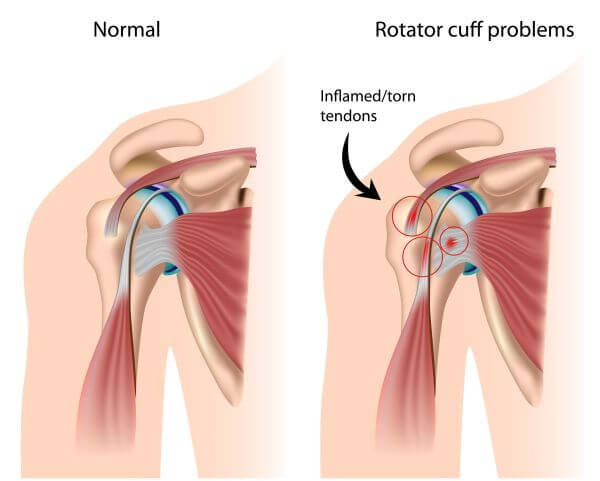
Those inflamed or torn tendons swell up, filling the space that is needed for proper range of motion. This, then, causes painful pinching of the muscles when the shoulder is moved.
Shoulder impingement can be caused by traumas such as falling or by repetitive use. Overhead motions like pitching in baseball or overhead pressing in weightlifting are known to cause inflammation that can lead to impingement.
A rotator cuff tear occurs when a rotator cuff muscle or tendon actually tears.
Tears can be minor or severe, as determined by the tissue(s) torn and the depth and thickness of the tear.
As with impingements, tears can be caused by acute traumas or the gradual wearing down of the rotator cuff muscles, which makes them more susceptible to tearing.
How Do You Treat Rotator Cuff Injuries?
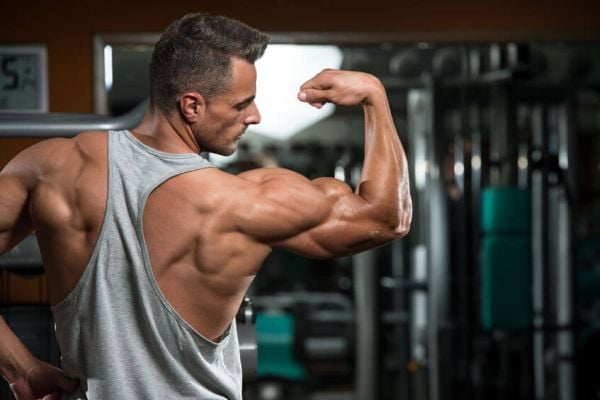
The proper treatment for a rotator cuff injury depends on the nature and severity of the injury.
In many cases, people can recover from rotator cuff disease or injury with rest and exercises that stretch and strengthen the muscles. Severe rotator cuff injuries like extensive tears may require surgery.
Determining how bad a shoulder injury is can be tricky.
- Pain isn’t a reliable indicator of the severity of the injury. Tendonitis or bursitis can be very painful whereas a large tear can be less so.
- Extreme muscle weakness can indicate a tear. People with large tears often find they can’t place their arm(s) in certain positions and are too weak to do simple actions like taking a gallon of milk out of the fridge.
- Like pain, loss of motion isn’t a reliable yardstick. Any condition that produces pain will generally restrict range of motion, but sometimes people with severe tears will have normal motion.
If you know or suspect you have a rotator cuff injury and want to know exactly what’s going on, my best advice is to see a sports medicine doctor.
He/she will be able to determine with certainty the extent of your injury and appropriate course of treatment.
How Do You Prevent Rotator Cuff Pain and Injuries?

The best way to prevent rotator cuff problems is to strengthen the muscles.
This is particularly important for athletes and weightlifters, who generally tend to focus on the major muscle groups and neglect “little” things like rotator cuff health, joint health, and overall mobility.
For example, many weightlifting programs involve a lot more bench and overhead pressing than pulling.
This causes an imbalance between the anterior muscles of the chest and shoulders and the posterior muscles of the back, which can cause bad posture and increase the risk of a rotator cuff injury.
If you’re following a well-designed program that involves a good amount of both pushing and pulling, however, that’s a good start.
Certain compound movements like the bench press, overhead press, and deadlift involve the rotator cuff muscles, there are several other exercises you can do to isolate them.
Whether you should do these exercises depends on your circumstances.
Personally, I started running into rotator cuff tightness on my right side after bench and overhead pressing significant (for me) amounts of weight for about a year (about 275+ pounds on the bench press and 205+ pounds on the military press).
The rotator cuff exercises I give below have helped eliminate the problem (along with some rather painful myofascial release work) but I may have been able to prevent it altogether if I would have started earlier.
The 4 Best Rotator Cuff Exercises
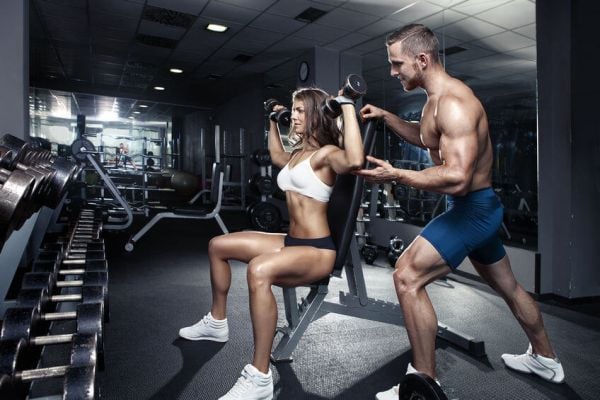
There are three types of movements that strengthen the rotator cuff muscles and four exercises that I recommend you do.
External Rotation
If you place your arm at your side, raise your forearm until it’s at a 90-degree angle to your upper arm, and rotate your hand away from your body, that’s external rotation.
Here’s how it looks:
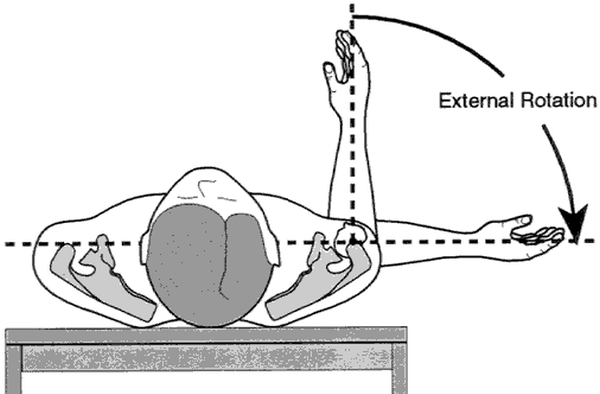
Here’s how you turn this into an exercise that strengthens the muscles involved:
Internal Rotation
As you’ve probably guessed, internal rotation is the opposite of external rotation and involves rotating the hand toward the body.
Remember that these distinctions also apply to shoulder rotation when the elbow is raised:

And here’s the exercise for internal rotation:
Scaption (Scapular Plane Elevation)
Scaption is a movement that’s in between a lateral and front raise.
Here’s a good explanation of it:
And the exercise is pretty obvious:
Face Pull
The Face Pull isn’t an exercise you see many people doing but it’s one of my favorites for training both the rotator cuff muscles and rear deltoids.
Here’s how they work:
Creating a Rotator Cuff Workout Routine
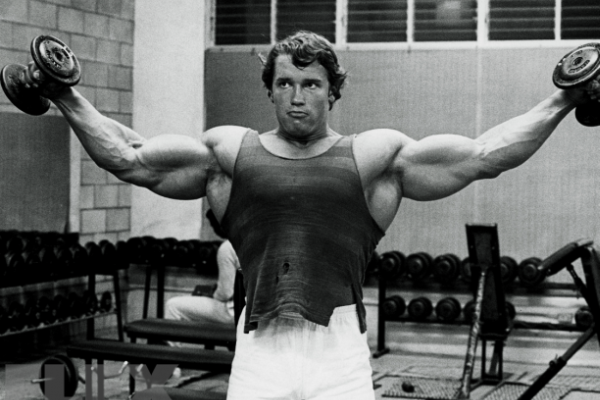
Now that you know which exercise you want to be doing, the next question is how you should program the workouts.
First, while I’m generally a proponent of heavy weightlifting, you don’t want to use heavy weights for rotator cuff exercises.
Yes, you want to get progressively stronger in these exercises over time (by lifting heavier weights), but I recommend that you work in the 10 to 12 or 12 to 15 rep range.
That means that once you can get 12 or 15 reps, you move up by 5 pounds on each arm. And if you can’t get at least 10 or 12 reps, the weight is too heavy.
In terms of volume (total sets) and frequency, a little bit goes a long way with rotator cuff exercises.
If you simply do one set of each of these exercises once or twice per week, that’s plenty. Personally I do rotator cuff exercises twice per week, after my bench and overhead pressing.
The Bottom Line on Rotator Cuff Exercises

Healthy joints are one of those things people just don’t fully appreciate until they’re gone.
They’ll rush to buy muscle builders, protein powders, hormone boosters, fat burners, and the like, but often overlook strategies to keep their shoulders, elbows, knees, and back healthy.
Well, take a page from professional weightlifters’ books and make sure you’re doing things to help your joints handle all the punishment and Future You will be thankful. 🙂
Happy benching!









